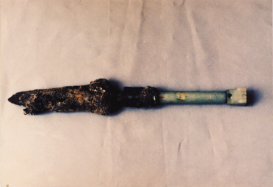In early Ancient China, natural copper and aerosiderite were made into different kinds of articles by forging techniques, such as copper tomahawks with iron blade (铁刃铜钺) in Gaocheng (藁城) in Hebei, Pinggu (平谷) in Beijing, and Junxian (浚县) in Henan. From 2000 BCE, copper smelting technology began to emerge. From 1000 BCE, iron smelting technology was brought into China, with evidence such as the iron relics at Yanbulake (焉不拉克) Cemetery in Xinjiang. Forging techniques were applied for large-scale metals processing. Metals' performance, for example hardness and toughness, could be improved significantly by particular forging techniques. However, as far as die-casting technology is concerned, the existing research on forging techniques has been insufficient.
In this project, forging techniques in metals processing in the pre-Qin period will be investigated on the basis of the historical literature and archeological discoveries, and by using simulation experiments and scientific analysis. The development status, technical connotations, and historical value will be explored.
I will first search, collect, and synthesize the literatures related to metals performances in Ancient China and Europe, such as the works of Georgios Agricola, R.F. Tylecote, Charles Singer and Donald B. Wagner; secondly I will study novel and effective experimental methods of forging techniques.

